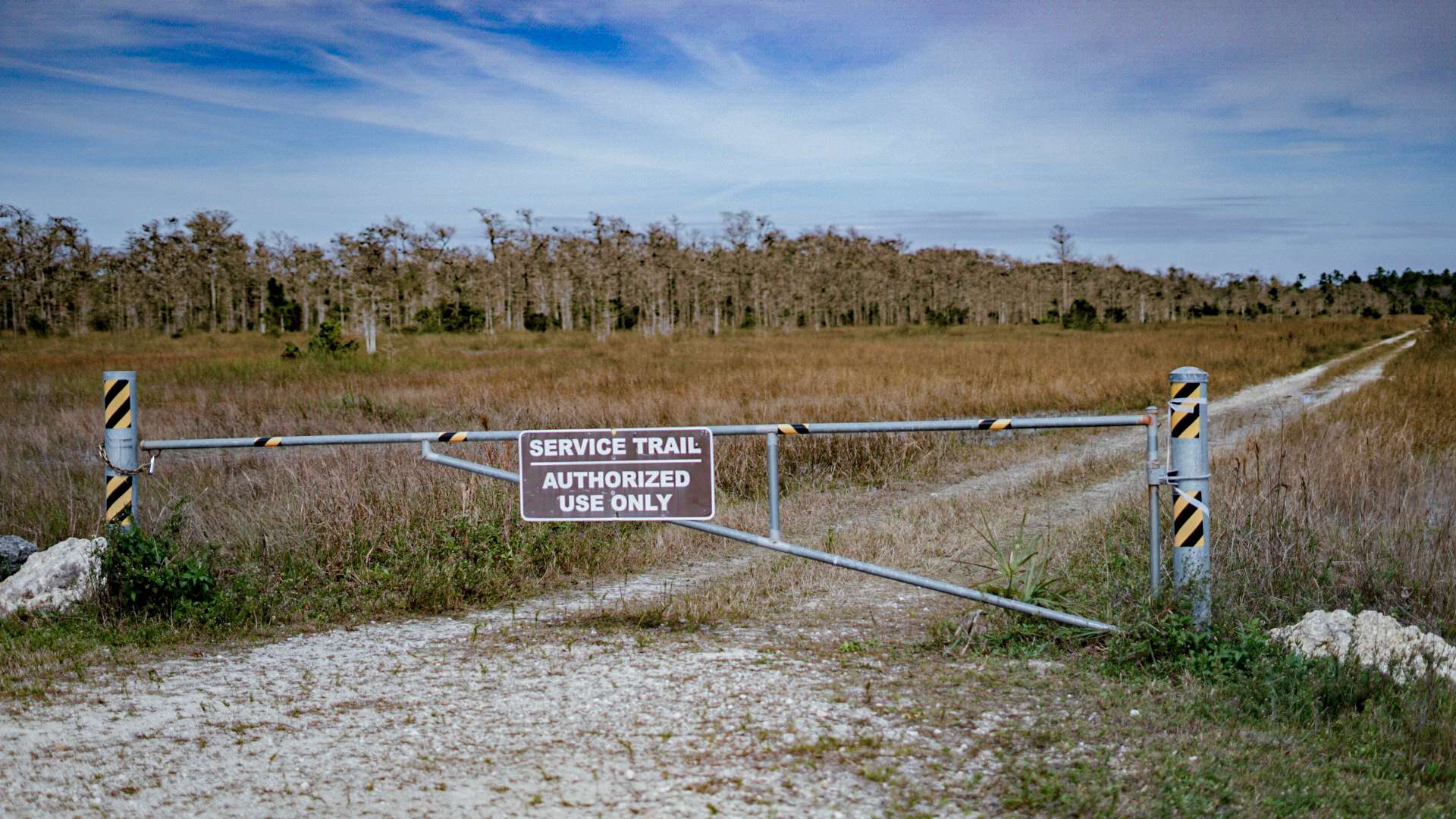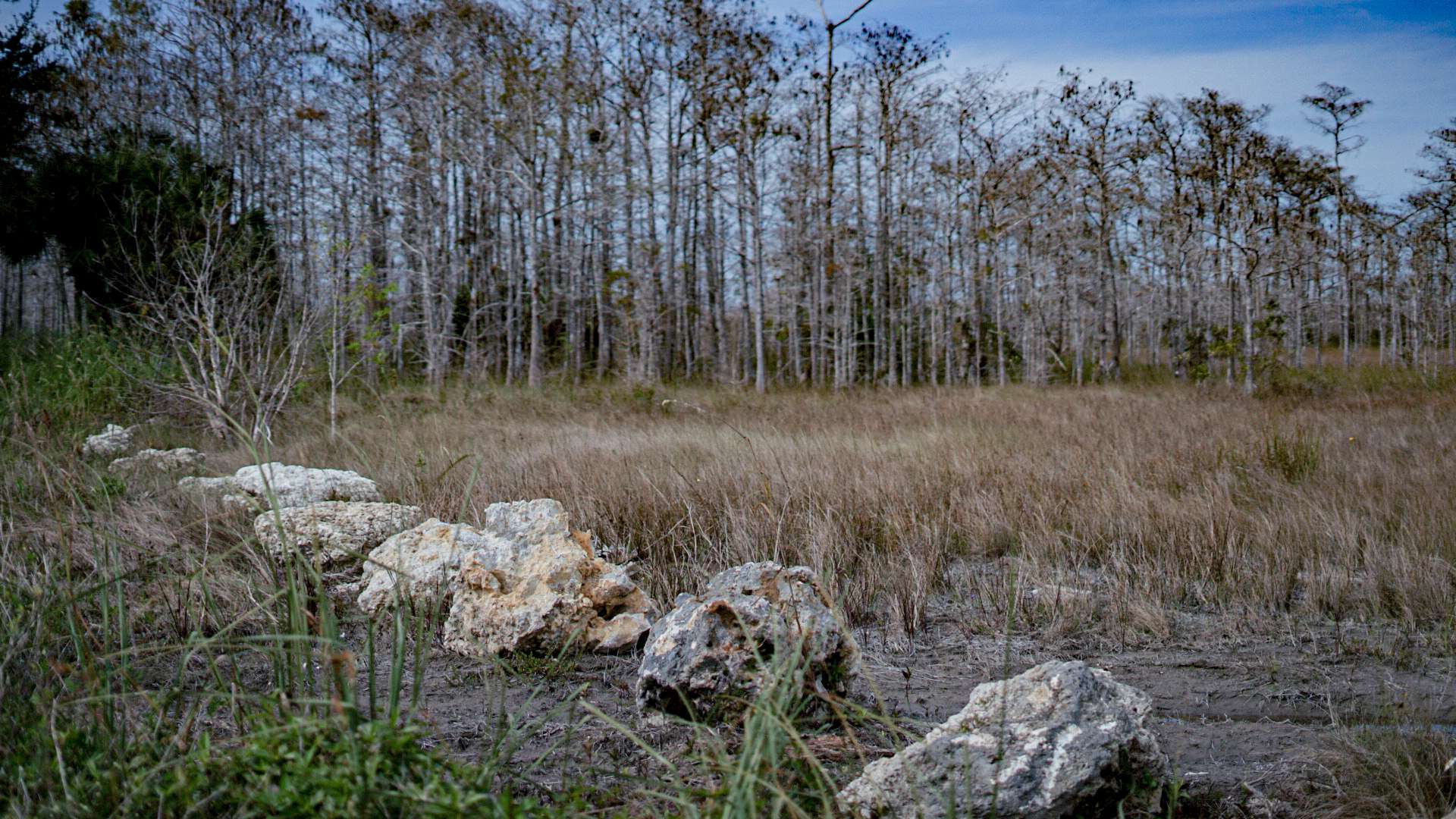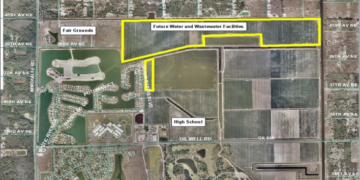This year marks the 50th anniversary of Big Cypress National Preserve. It also marks the peaking of efforts by the Miccosukee Tribe to end oil drilling and pumping in the Everglades.
When the federal government bought more than 700,000 acres from the descendants of Barron Collier in 1974 in creating the preserve, the deal allowed for the Tribe to live off some of that land in the form of fishing, hunting and ecotourism, including airboat tours. However, Collier Resources Co. maintained the mineral rights, which included two oil wells that already had been drilled and a third that since was drilled.
The wells are named Bear Island and Racoon Point. The latter is about 11 miles north of Tamiami Trail, where a locked yellow gate and a dirt road entrance are about the same distance west of the Tribe’s headquarters in western Miami-Dade County.
 In a conference room on the fifth floor of those headquarters, Miccosukee Tribe Chairman Talbert Cypress spoke about the importance of acquiring the mineral rights. A previous deal to purchase the rights in the early 2000s fell through.
In a conference room on the fifth floor of those headquarters, Miccosukee Tribe Chairman Talbert Cypress spoke about the importance of acquiring the mineral rights. A previous deal to purchase the rights in the early 2000s fell through.
“A lot of our cultural resources are in the Big Cypress National Preserve,” Cypress said. “We’re hoping to stop more drilling in the Big Cypress National Preserve forever. I know we have a lot of support from a lot of various organizations, as well as the Florida delegation.
“For us it’s important—for the Tribe it’s important, because it’s our natural duty to protect the Everglades. It’s written into our constitution that we’re supposed to protect the environment. Also, overall, you know South Florida is growing. The population is growing. You know, we need a healthy environment to sustain that population for the future.”
WildLandscapes International has been working with the Tribe as a sort of middleman with its biggest current task being appraising the mineral rights value.
“We’re helping facilitate the deal,” said David Houghton, director of WildLandscapes. He has a background in waterfowl biology. “Not like a broker. We don’t take a commission. We’re a nonprofit. We’re working with the Department of Interior to get the due diligence done. We’ve done the title work, and we’re working on an appraisal right now. That should take the next couple of months.
 Collier Resources submitted a sealed “floor” price for those mineral rights to the Department of Interior, confirmed Christian Spilker, president of Collier Enterprises.
Collier Resources submitted a sealed “floor” price for those mineral rights to the Department of Interior, confirmed Christian Spilker, president of Collier Enterprises.
“WildLandscapes approached us,” Spilker said. “If the price is right … there’s a lot of acreage there. They want to pursue it in perpetuity. We’ll see.”
When Barron Collier, for whom Collier County was named, died in 1939, he did so having tried exploring for oil. His legacy company’s first well was drilled in 1943 at what’s called Sunniland near what’s now the intersection of State Road 29 and Oil Well Road.
“There’s been 130-plus million barrels produced out of the Sunniland formation,” Spilker said. “That’s a lot. They’re active wells. We’re not actively drilling.
 “Big Cypress Preserve formed around two of our fields. One field was active, and we drilled another field after the preserve was created.”
“Big Cypress Preserve formed around two of our fields. One field was active, and we drilled another field after the preserve was created.”
If the value triggers the sale, the buyout would be done in phases, all three parties said. It would be paid for from taxes imposed on oil companies doing offshore drilling.
While WildLandscapes is acting as a middleman for the Tribe, the Tribe is acting as a middleman for the entire state and country, Cypress said.
“We’re just looking out for everybody,” Cypress said. “I think everybody should have a vested interest to not have oil drilling in the Everglades.
“You know with the exploration of oil out there in Big Cypress, once they explore out there, it changes that landscape completely. It’s never going to be the same after that. Even just from exploration, not even the drilling itself. That’s why it’s so important to stop. We would like to see purchasing begin in 2025.
To read more about the Miccosukee Tribe’s efforts to put a stop to oil drilling in Big Cypress National Preserve in the September 2023 issue of Gulfshore Business, click here.





